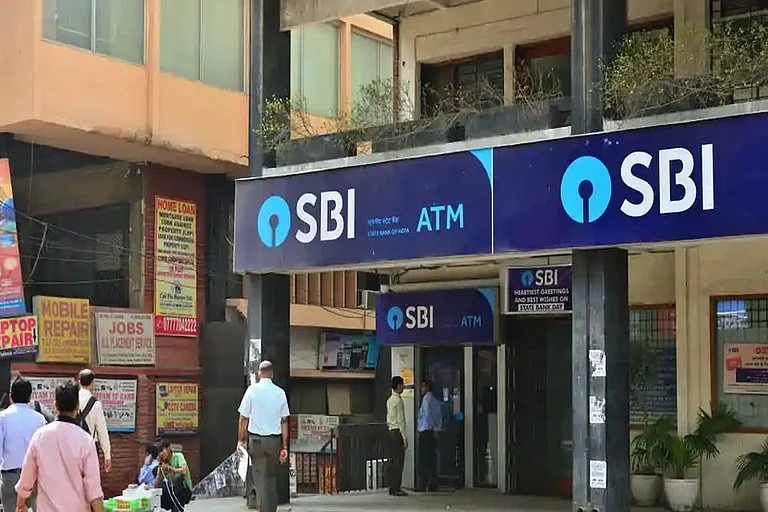The Reserve Bank of India (RBI) has taken several steps to help mitigate the liquidity crunch in the banking system through repo rate auctions, open market operations (OMOs) and dollar-rupee swaps. Still, even after following all these moves, liquidity has been tight and it is now anticipated that as much as an additional Rs 1 lakh crore would be required by the end of March 2025 in order to settle the ongoing crisis, SBI Research has said a recent study.
It said that the systematic liquidity shortage has intensified in the last few months. In November 2023, the banking system witnessed a liquidity surplus of Rs 1.35 lakh crore. But this became a shortfall of Rs 65,000 crore in December. This shortfall later expanded to Rs 2.07 lakh crore in January 2024 and Rs 1.59 lakh crore in February of the same year.
“We believe around Rs 1 trillion more will be needed by March to keep systematic liquidity just in equilibrium,” the report said.
A number of reasons may have led to the liquidity deficit, such as large foreign portfolio investor (FPI) outflows, maturing forward transactions, and end-of-year tax outflows. The report notes that FPIs pulled out Rs 34,574 crore from Indian equities in February 2025, with total outflows reaching Rs 1.12 lakh crore in the first two months of the year. From October 2024 to February 2025, FPI outflows stood at Rs 2.12 lakh crore, further deteriorating liquidity conditions, even as domestic institutional investors pumped Rs 3.3 lakh crore into the market.
RBI’s Liquidity Steps And Their Limitations
In order to neutralise the liquidity pressure, the RBI has taken several measures. These include:
Variable rate repo (VRR) auctions of varying tenures.
Daily VRR auctions from January 16, 2025.
Dollar-rupee swap facilities to infuse liquidity.
Open market operations (OMOs) of Rs 1.39 lakh crore.
Repo rate reduction by 25 basis points in February 2025
The report, however, said that these steps may not be enough. Although the daily liquidity shortage has eased in March 2025, the overall situation continues to be grim.
"Liquidity remains tight due to year-end tax outflows and sustained credit demand," the report said.
Further, the dependence of RBI on short-term options such as day-to-day VRR auctions has also been seen to be a cause for concern. The report asserts that these infusions are effectively replacing a more persistent liquidity gap, which has been compounded by currency leakage and forex market intervention.
Impact On Financial Markets And Interest Rates
The shortage of liquidity has resulted in increased borrowing cost in the money market.
According to the SBI report, corporate bond yields and certificate of deposit (CD) rates have increased significantly. During February 2025, the repo rate spread over corporate bond yields widened to 125 basis points (bps), while the repo rate spread over three-month CD rates widened to 119 basis points.
The report added that in spite of the 25 bps cut in repo rate, the report the transmission of low interest rates has failed. Even the spread between government bonds and state government securities has increased, making borrowing for corporates and states costlier.
Will RBI Need To Inject More Liquidity
The SBI report added hat RBI could infuse another Rs 1 lakh crore by March 2025 in order to place liquidity at an even level. This could either be through increased OMOs, repo auctions, or curtailing the CRR.
The report stated, "More liquidity measures could be required on a sustained basis, and RBI may need to use CRR as a countercyclical liquidity buffer rather than a regulatory tool."
The report also pointed to cash leakage from the Mahakumbh festival, where retail deposit withdrawals have risen while new deposits have largely been from non-retail players. This indicated hat some of the withdrawn cash will not find its way back into the banking system in the near future, further constricting liquidity, the report said.
According to the report, with liquidity conditions set to remain constricted in the near future, the RBI is now confronted with a tricky balancing act.
“The central bank needs to provide adequate liquidity to facilitate economic activity without unleashing excess liquidity which might become inflationary,” the report said.
The SBI report highlighted the need for more long-term solutions to liquidity rather than depending on short-term palliatives.
The report concluded that If liquidity conditions do not improve, the RBI may have to further ease monetary policy or conduct additional OMOs to stabilise the banking system. However, the effectiveness of these measures will depend on how the banking sector and financial markets respond in the coming months, it added.














